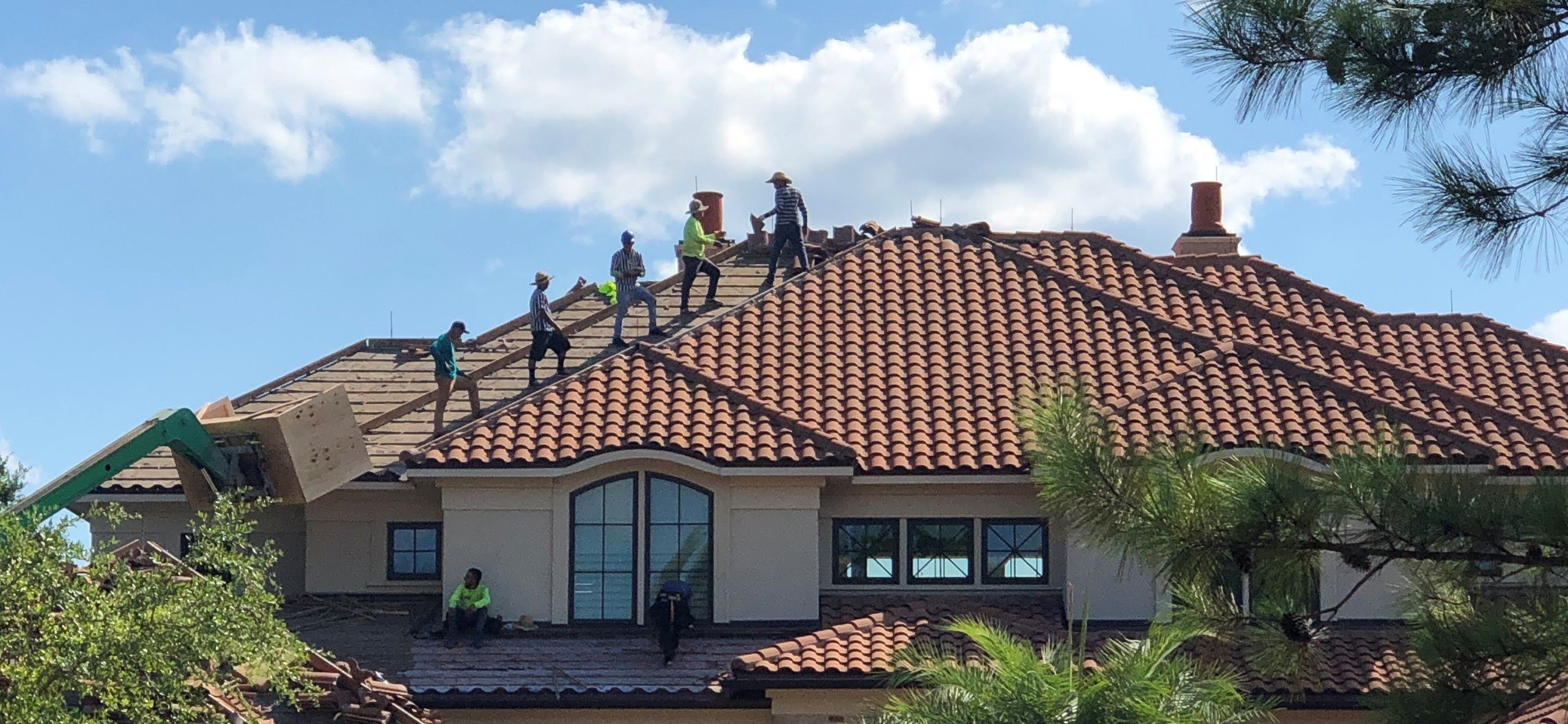Examining the Services Offered by Roofing Companies in Gainesville Florida
Examining the Services Offered by Roofing Companies in Gainesville Florida
Blog Article
Ideal Practices for Ensuring Proper Roofing Air Flow
A well balanced consumption and exhaust air vent proportion, generally 1:300, plays a pivotal duty, with consumption vents ideally positioned at the reduced edge of the roof covering for trendy air entrance and exhaust vents at the peak for cozy air departure. Maintaining insulation away from vents is important to protect against air flow limitation.
Understand Air Flow Fundamentals
Correctly recognizing ventilation fundamentals is vital for making certain the longevity and performance of roof systems. Efficient ventilation reduces wetness buildup and temperature extremes in the attic, both of which can cause significant structural damages over time. A well-ventilated roofing system aids in stopping typical concerns such as mold development, wood rot, and ice dams, which can endanger the integrity of the roof products and the underlying frameworks.
The key objective of air flow is to promote the motion of air, permitting a consistent exchange between the interior and exterior settings. This equilibrium is achieved via a mix of consumption and exhaust vents that interact to keep ideal airflow. Intake vents, generally situated along the eaves or soffits, allow fresh air to get in the attic room space, while exhaust vents, often situated at or near the roof covering ridge, make it possible for hot, moist air to run away.
Trick elements affecting the performance of roofing ventilation consist of appropriate positioning, adequate sizing, and making certain that both intake and exhaust vents are unhampered. Regular assessment and upkeep are crucial to determine potential obstructions, damages, or ineffectiveness in the air flow system, thereby guarding the roof covering's performance and longevity.
Sorts Of Roof Covering Vents
Roofing system vents play an important duty in preserving effective attic ventilation and, by extension, the total health and wellness of the roof. Various kinds of roof covering vents are available, each with special advantages customized to certain roofing needs. Ridge vents, for instance, are installed along the roof covering's peak, enabling warm, damp air to escape from the attic. They offer continual ventilation and mix seamlessly with the roofline, making them both reliable and cosmetically pleasing.

Soffit vents are set up under the eaves and job in tandem with roofing vents to guarantee a balanced intake and exhaust system. By enabling cooler air to enter from below, soffit vents promote the expulsion of hot air through upper vents. Gable vents, located on the outside wall surfaces of the attic room, deal an additional effective service, particularly in homes with gable roof coverings.
Evaluate Your Current Air Flow

Next, consider the age and condition of your roofing materials and air flow elements. Older systems may not abide by current building ordinance or may have deteriorated with time, minimizing their performance. Conduct a complete exam to identify any indicators of wear and tear, such as corrosion, damage, or gaps that might jeopardize the system's performance.
Furthermore, measure the attic room temperature level and humidity degrees. Heats and moisture can show poor ventilation - roofing companies in gainesville florida. Use a hygrometer and that site thermostat to get precise analyses, contrasting them with outside conditions. Relentless inconsistencies recommend possible issues that need addressing.
Setup Best Practices
Efficient setup of roofing air flow systems is extremely important for guaranteeing optimum performance and long life. Proper installation begins with recognizing the specific air flow demands of the roofing and the building it covers. This entails computing the right proportion of intake to exhaust vents, commonly sticking to the 1:300 rule, which states one square foot of ventilation for each 300 square feet of attic room floor area.

The positioning of vents is equally vital. Intake vents should be set up at the roofing system's reduced side, often in the soffits, to permit amazing air to get in. Exhaust vents, on the various other hand, ought to be installed near or at the roof's peak to facilitate the exit of warm, damp air. This produces a natural air flow that helps keep temperature and dampness equilibrium within the attic room.
Seal all air vent links carefully to avoid air leakages and possible water seepage. Use top quality products and follow producer standards to guarantee longevity and performance. In addition, integrating ridge vents with baffles can dramatically improve air movement efficiency by protecting against wind-driven rainfall and snow from getting in the attic.
Eventually, exact installation of roof air flow systems reduces find more potential concerns such as mold growth, ice dams, and architectural damages, guaranteeing the roof covering's integrity and the structure's overall health and wellness.
Normal Maintenance Tips
Uniformity in upkeep techniques is essential to ensuring the long-term effectiveness of roof covering ventilation systems. Throughout these assessments, make certain that vents are totally free of debris, nests, and various other obstructions that can restrain air movement.
Utilize a soft brush or a vacuum to remove dust and particles from consumption and exhaust vents. Be cautious not to harm the vent screens or louvers during the process.
Proper insulation is similarly important. Make sure that attic insulation does not block the vents, as this can severely restrict air movement. If any kind of insulation has actually moved or worked out, reposition or change it to maintain a reliable barrier.
Lastly, change any kind of damaged or missing out on elements quickly. Busted vents, broken tiles, or tatty flashing can all add to poor air flow and should be dealt with pop over here without hold-up. Routine maintenance ensures that the roof covering air flow system operates ideally, thus expanding the lifespan of the roofing itself.
Verdict
Making sure proper roof air flow is critical for maintaining the efficiency and sturdiness of a roof covering system. Adherence to the 1:300 consumption and exhaust vent proportion, coupled with the strategic placement of vents, is essential. Normal semiannual inspections, debris cleansing, and making certain insulation does not block air flow are important techniques. Applying these ideal practices will cultivate a well-ventilated roof, thus alleviating possible problems connected to moisture buildup and extreme warmth, ultimately extending the roof's life-span.
A balanced consumption and exhaust air vent ratio, commonly 1:300, plays a pivotal role, with intake vents ideally positioned at the reduced side of the roof covering for trendy air access and exhaust vents at the height for warm air leave. Intake vents, usually situated along the eaves or soffits, allow fresh air to get in the attic space, while exhaust vents, frequently positioned at or near the roofing system ridge, allow warm, moist air to leave.
Soffit vents are mounted under the eaves and work in tandem with roofing system vents to guarantee a well balanced intake and exhaust system. By enabling cooler air to enter from below, soffit vents help with the expulsion of hot air with upper vents. Adherence to the 1:300 intake and exhaust vent ratio, paired with the critical placement of vents, is vital.
Report this page